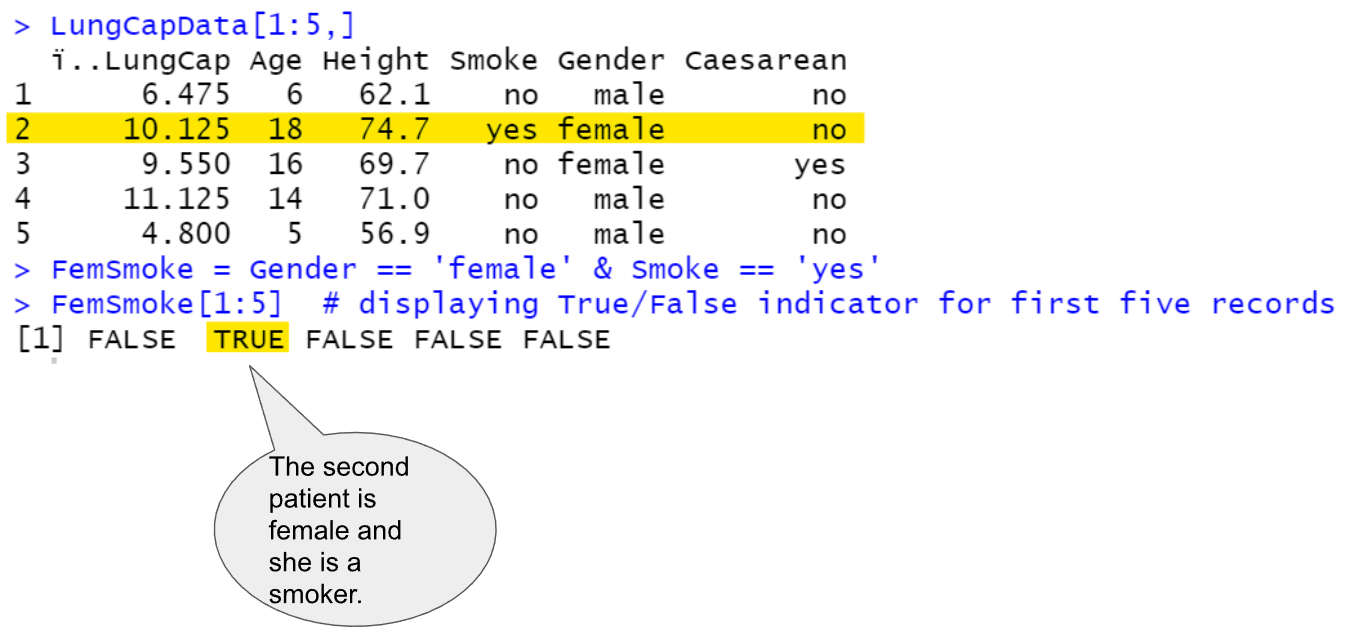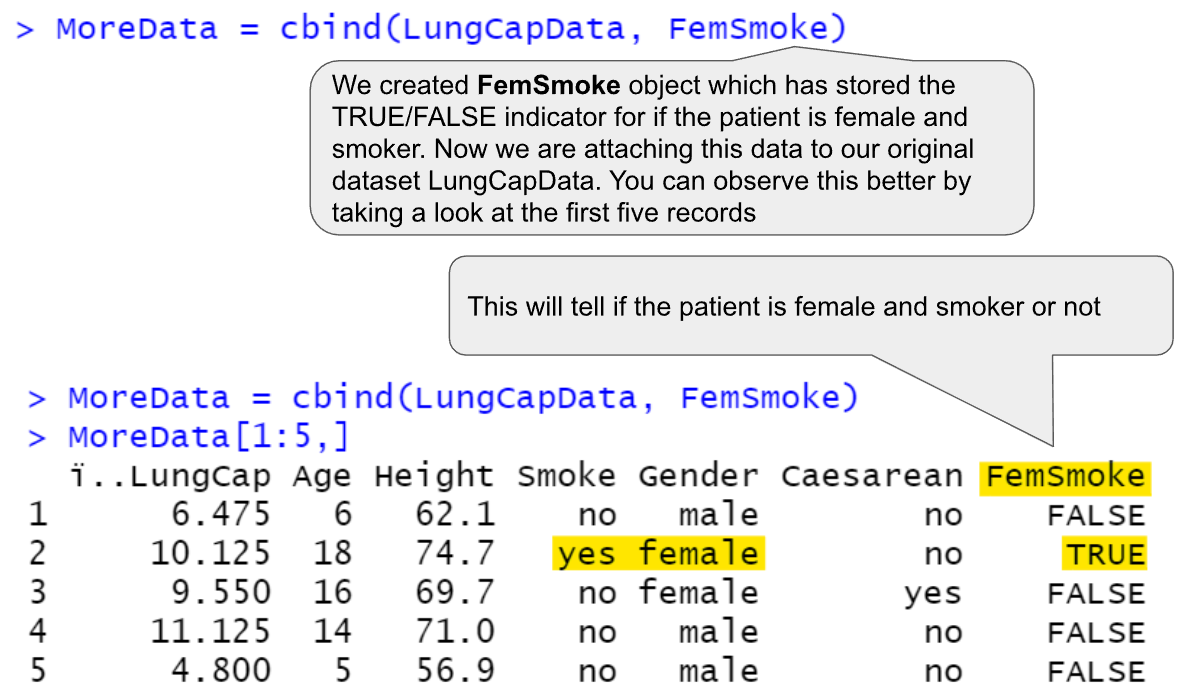Learning Objectives
- Sort/Select Data in R
- Logical Statements in R
- cbind & rbind functions in R
Introduction
- When working with a large data set, you might only be interested in a small portion of it. How do you sort through all the variables and observations and extract only the data that you need? R has several ways of sorting and selecting data in a process called "subsetting." Brackets in R lets you select or subset data from a vector, matrix, array, list, or data frame.
- R's operators can be summarized as:
- [ for subsets,
- [[ for extracting items, and
- $ for extracting by name.
Selecting a Subset From Dataset
We already have our dataset LungCapData loaded in the R environment. Let's say we want to see the details of male patients. We can select the required data, as shown in the screenshot.

- In the video coming up in the next slide, the tutor will discuss
- Subsetting data from a vector and matrix in R
- Subsetting data from a dataset with given conditions
True / False Indicator for Observations
Let's say we want to check if the observations satisfy the given conditions as TRUE or FALSE indicator. Suppose we want to create a TRUE/FALSE indicator vector for those who are female and they smoke. So if both the conditions satisfy, then return TRUE else FALSE.

cbind
We can attach vectors or matrices in a column-wise fashion using the cbind command and in a row-wise fashion using the rbind command. Don't worry; you will get more clarity by seeing an example.

rbind

- In the video coming up in the next slide, the tutor will discuss the following topics:
- how to create a logical vector or variable in R Statistical Software
- how to turn True or False indicators into 0's and 1's in R using the "as.numeric" function
- how to use multiple logical statements within an R command/function to have a logical vector answering multiple questions (step-by-step example)
- how to attach vectors or matrices in a column-wise fashion using the "cbind" function or in a row-wise fashion using the "rbind" function in R
- two different ways of cleaning R's workspace: using RStudio's menu or "rm" command/function